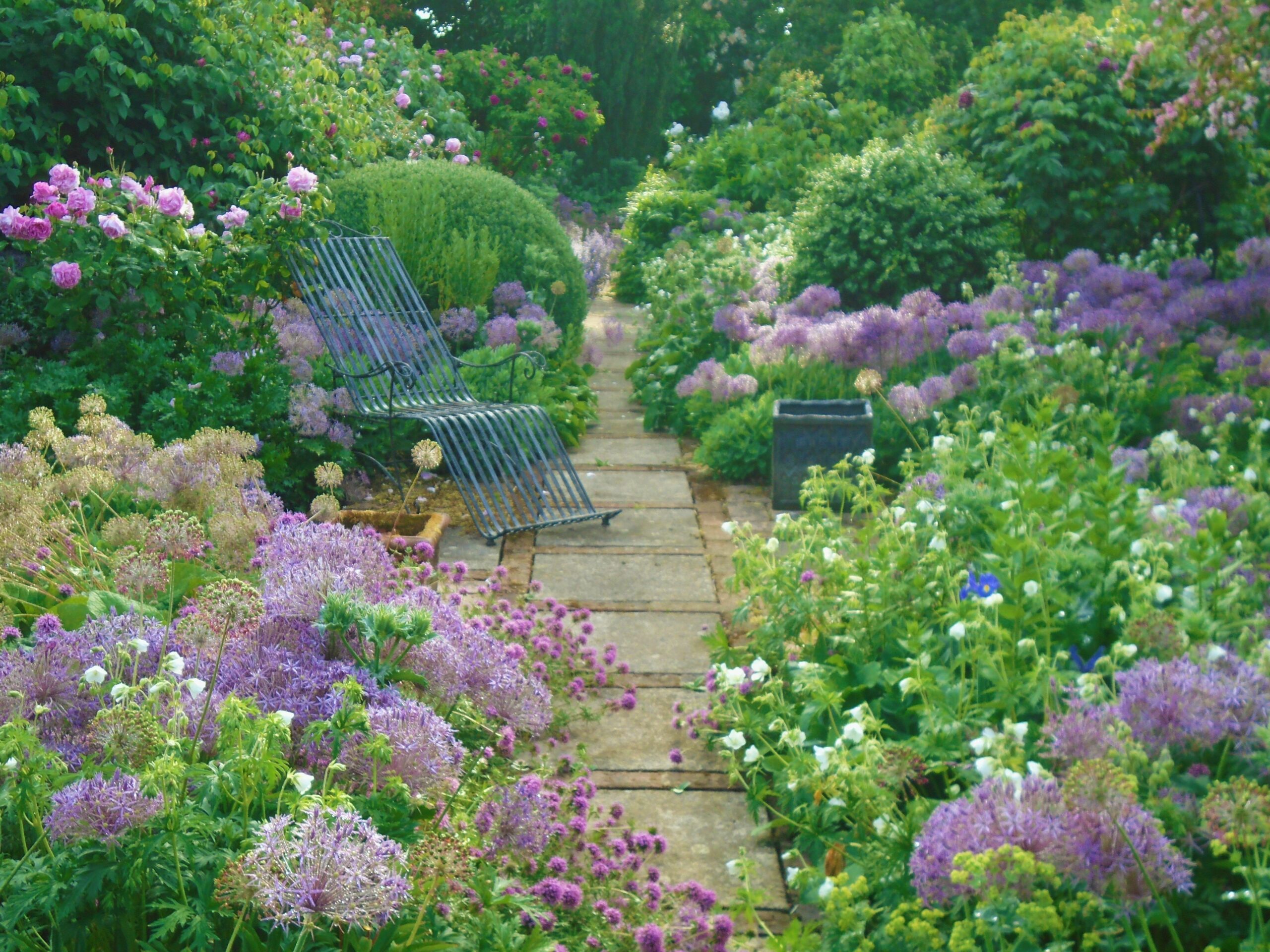About 80 West Hill
The family moved in 2016 into a modern, new property situated in a natural setting, adjacent to older properties with more character. The west-facing rear garden had a small patio, no planting and most of the space had been turfed over. The back border was marked by an original Victorian brick wall. The awkwardly shaped front garden had a low-quality drive, lawn and paved pathway. A tall holly hedge runs the length of the plot, from front to rear borders. The family’s dream was to turn this blank canvas into a haven for time together and with wider family and friends. The family’s wish list included a generous dining area, a good-sized lawn, a place to grow vegetables and a hammock to relax in. Room to entertain lots of people was a must, as were spaces for quiet retreat.
Overall, the design intention was to create a warm, naturalistic feel. The house already had a connection to the garden thanks to bi-fold doors which open straight from the kitchen/family room into the outside space, and strengthening that connection was a vital element of the design concept. It was also important to complement the original brick wall running along the back of the site (dating from days where the new build plot had been part of the neighbouring property’s large garden) and to pay homage to the long holly hedge.
The front garden now offers a sense of calm welcome. A fluid organic design has diffused the garden’s uneven geometry, and different uses of rock – including boulders, sawn boulders and sawn irregular-shaped paving – have added visual interest. This use of natural materials along with addition of a water feature now create a harmonious flow towards the house. On a practical note, the driveway has been modified to accommodate more vehicles when needed. The existing porch was small and rather dingy; part of the design solution was to replace this with a larger, lighter porch which blends the home’s modern architecture with the older properties nearby.
The rear garden reflects the modern building through strong geometry, with planting and materials chosen to soften the effect. A pale grey sandstone terrace flows from the kitchen, while the planters, low walls and laser-cut art of the fire pit are all weathering steel that rusts to warm tones. Clay pavers leading to the fire pit complement the original brick wall at the rear, while the fire pit seating and raised beds in the vegetable garden are green oak. The terrace is home to four large ‘floating’ planters while the lawn has four generous quadrant beds. Both look like mass planting as the year progresses.
The rear garden’s planting is intricately layered, featuring different species and combinations. Each terrace bed is home to a multi-stemmed amelanchier, underplanted with spring bulbs. The naturalistic lawn beds include alliums, nepetas, salvias, asters, achilleas and grasses. The perimeter borders are more of a woodland mix.
A handcrafted greenhouse designed by James Scott was added in the final stages of the project. Next to the greenhouse is a small meadow from wildflower turf, embellished with spring bulbs and home to the hammock. The back border has been deepened recently to accommodate a bespoke Corten steel water feature, in keeping with the weathering steel featured elsewhere. Designed by James Scott following Fibonacci mathematical principles, this has added visual dynamics and tranquil sounds, as well as attracting more garden birds to the space. The semi-sunken trampoline pit has recently been re-designed into a place for quiet retreat, reflecting the changing needs of the family.
.
Features inc fire pit area, water feature, glasshouse, secluded seating area. There is careful use of Yorkshire stone illustrating the journey from boulder to slab. Winner of three National Awards inc a Design Excellence Award and Homes and Gardens Award for Best Small Garden (2023).

.jpg)
.jpg)
.jpg)
.jpg)
.jpg)
.jpg)
.jpg)
.jpg)
.jpg)


.jpg)
.jpg)
.jpg)
.jpg)

.jpg)
.jpg)
.jpg)